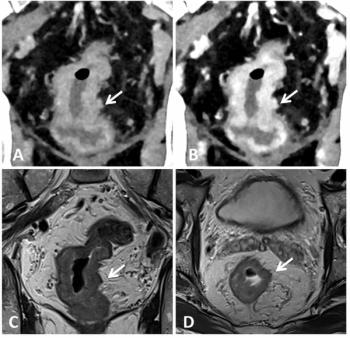
Imaging May Identify Early Alzheimer’s Disease
MRI may be able to detect an early marker of atypical Alzheimer’s disease.
White matter degeneration detected by MRI may be an early marker of atypical Alzheimer’s disease (AD) pathologic changes, according to a study published in
Using diffusion-tensor MRI, researchers from Italy assessed white matter (WM) tract damage in 53 patients with atypical AD, including early-onset AD (EOAD), logopenic variant of primary progressive aphasia (lvPPA), and posterior cortical atrophy (PCA).
“Our goal was to use DTI to identify similarities and differences in white tract damage across the AD spectrum and in relation to patterns of cortical atrophy,” co-author Federica Agosta, MD, PhD, said in a release.
The study included 28 patients with EOAD, 12 patients with lvPPA, and 13 patients with PCA relative to age- and sex-matched healthy subjects. WM tract damage and cortical atrophy were assessed by using diffusion-tensor MR imaging and voxel-based morphometry, respectively.[[{"type":"media","view_mode":"media_crop","fid":"38329","attributes":{"alt":"","class":"media-image media-image-right","id":"media_crop_1118248853981","media_crop_h":"0","media_crop_image_style":"-1","media_crop_instance":"3804","media_crop_rotate":"0","media_crop_scale_h":"0","media_crop_scale_w":"0","media_crop_w":"0","media_crop_x":"0","media_crop_y":"0","style":"float: right;","title":"Federica Agosta, MD, PhD","typeof":"foaf:Image"}}]]
The results showed there was a common pattern of WM damage in patients with EOAD, lvPPA, and PCA. The damage involved the body of the corpus callosum, fornix, and main anterior-posterior pathways. The patients also shared cortical atrophy of the left temporoparietal regions and precuneus.
Patients with EOAD had specific damage to the genu and splenium of the corpus callosum and parahippocampal tract bilaterally. White matter damage was found in all patients with AD, and was more severe in the two focal forms (lvPPA and PCA). It was also more widely distributed than expected on the basis of cortical atrophy.
“The white matter damage in patients with focal AD syndromes was much more severe and widespread than expected and cannot be explained solely by gray matter atrophy which was more localized,” Agosta said.
The researchers concluded that this distribution of WM damage shows that WM degeneration may be an early marker of AD pathologic changes in EOAD and focal AD forms.
Newsletter
Stay at the forefront of radiology with the Diagnostic Imaging newsletter, delivering the latest news, clinical insights, and imaging advancements for today’s radiologists.



























